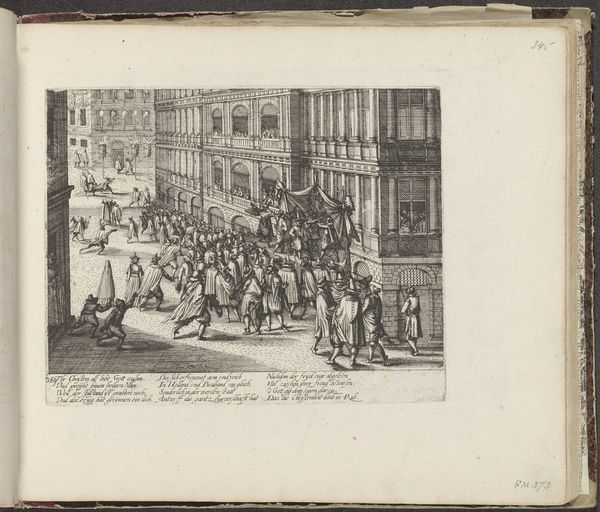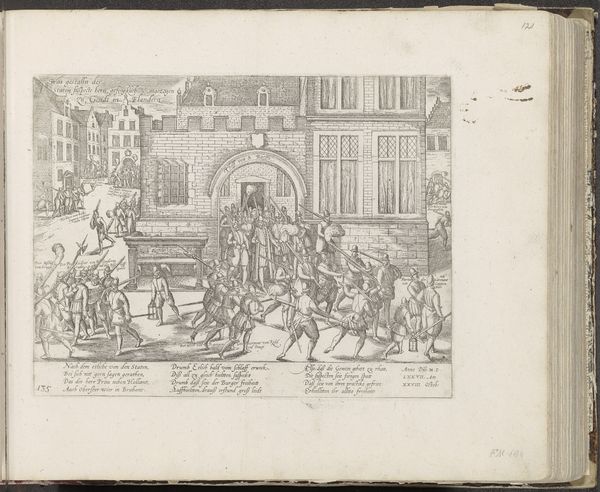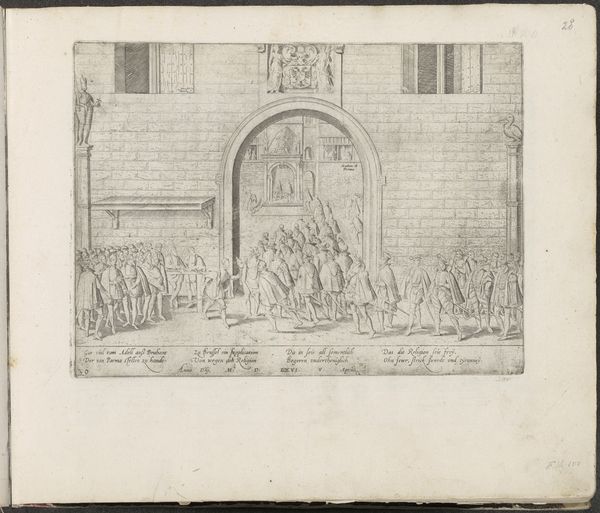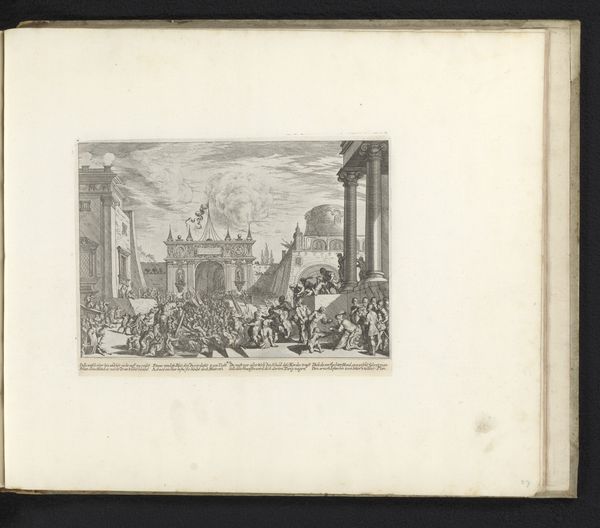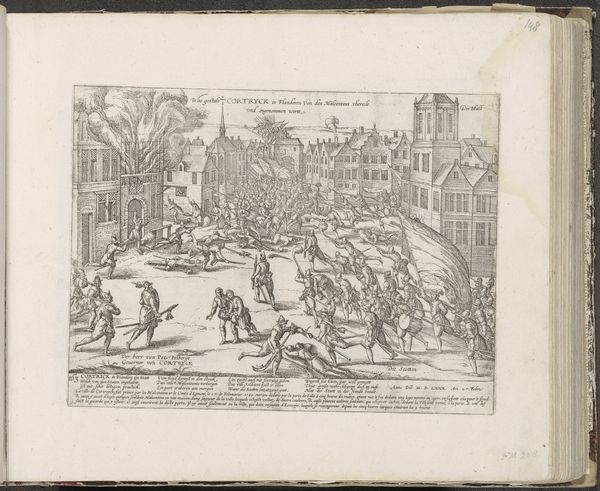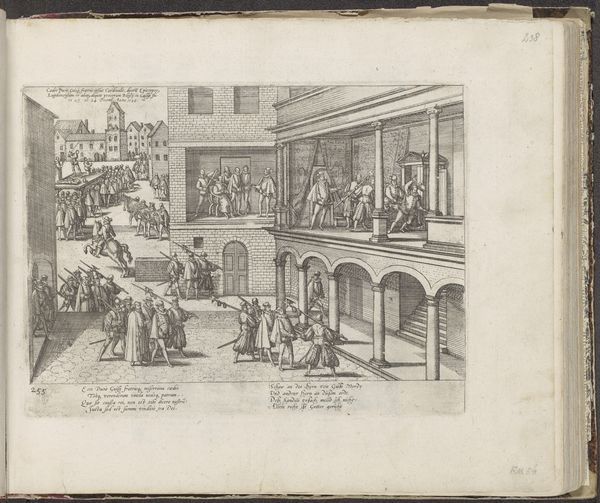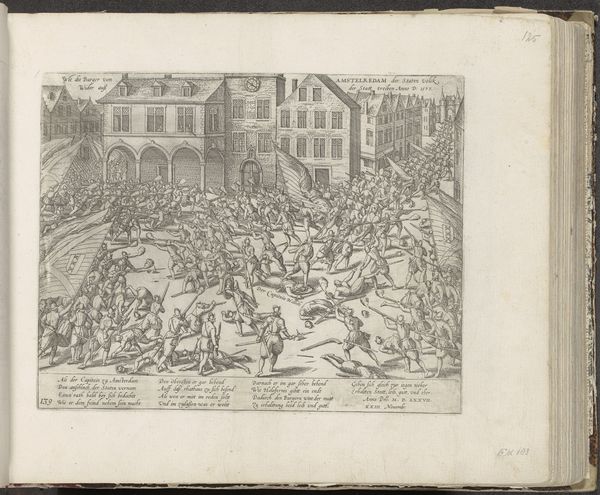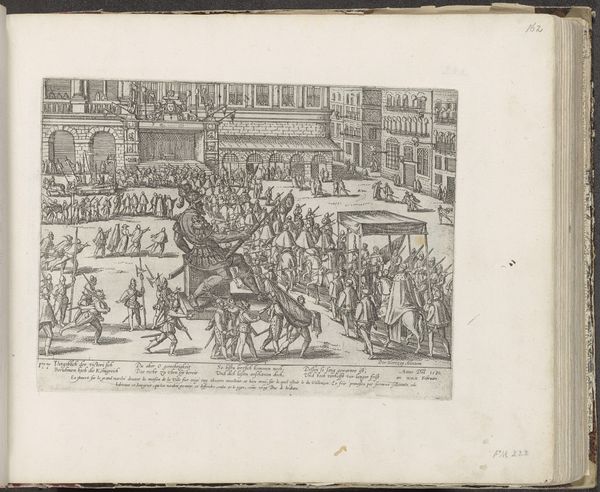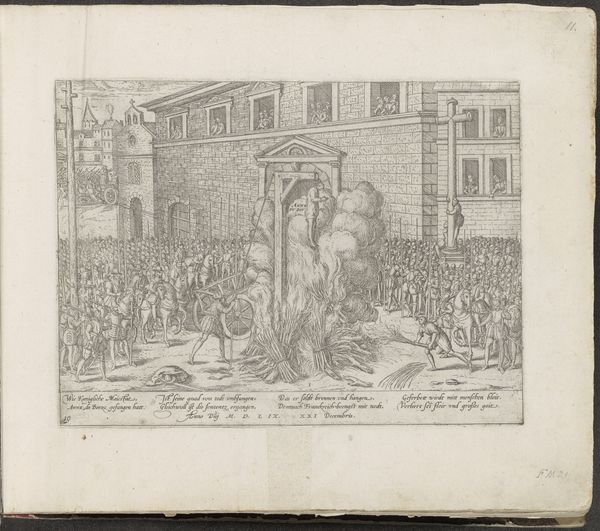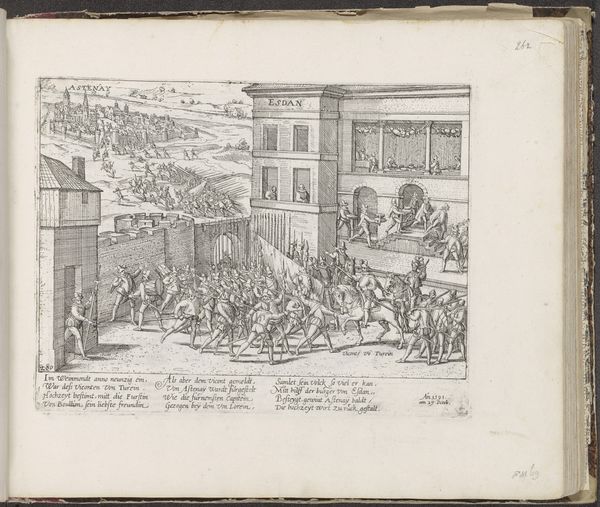
print, engraving
# print
#
figuration
#
cityscape
#
history-painting
#
northern-renaissance
#
engraving
Dimensions: height 207 mm, width 279 mm
Copyright: Rijks Museum: Open Domain
Editor: Here we have "La Motte-Gondrin opgehangen te Valenciennes, 1562", an engraving by Frans Hogenberg created sometime between 1567 and 1571. The level of detail is impressive for a print; it's also a disturbingly violent scene, dominated by the architecture. What strikes you when you examine this work? Curator: Formally, the orthogonal structure creates an implied tension between the hanging body in the upper register and the active clash on the ground. The receding perspective of the building's facade is notably askew, producing a slight dissonance. Note the calculated use of light and shadow, particularly how the windows frame pockets of violence, which heightens the spatial complexity. Editor: That's fascinating! I was so focused on the dramatic scene, I didn’t notice the subtle distortions in perspective. Are those purposeful compositional choices, you think? Curator: Certainly. Hogenberg orchestrates our viewing. Consider how the sharp, angular lines of the weaponry contrast against the rigid geometry of the architecture. This deliberate opposition furthers a structural narrative wherein order confronts chaos. Do you observe the meticulous rendering of textures, differentiating the brick from the garments? Editor: Yes, now that you point it out! I see how that contrast creates further depth. The building seems like a silent observer. Curator: Precisely! And that silent observation is structurally crucial, emphasizing the enduring nature of architecture juxtaposed against ephemeral human drama. Note the almost diagrammatic quality of the figuration. Each body is reduced to essential lines and forms. Editor: It's like a brutal, efficient record. The figures almost become part of the architectural design. Curator: An astute observation! The artwork, then, functions not just as a depiction of violence but as a formalized commentary on power, structure, and visual order. Editor: This close reading gives me a new way to appreciate the artist’s technical skill in conveying this historical event, while still adhering to structuralist aesthetics. Curator: Indeed, by dissecting the work’s formal properties, we come to appreciate its underlying mechanisms and its broader statement on representation itself.
Comments
No comments
Be the first to comment and join the conversation on the ultimate creative platform.

